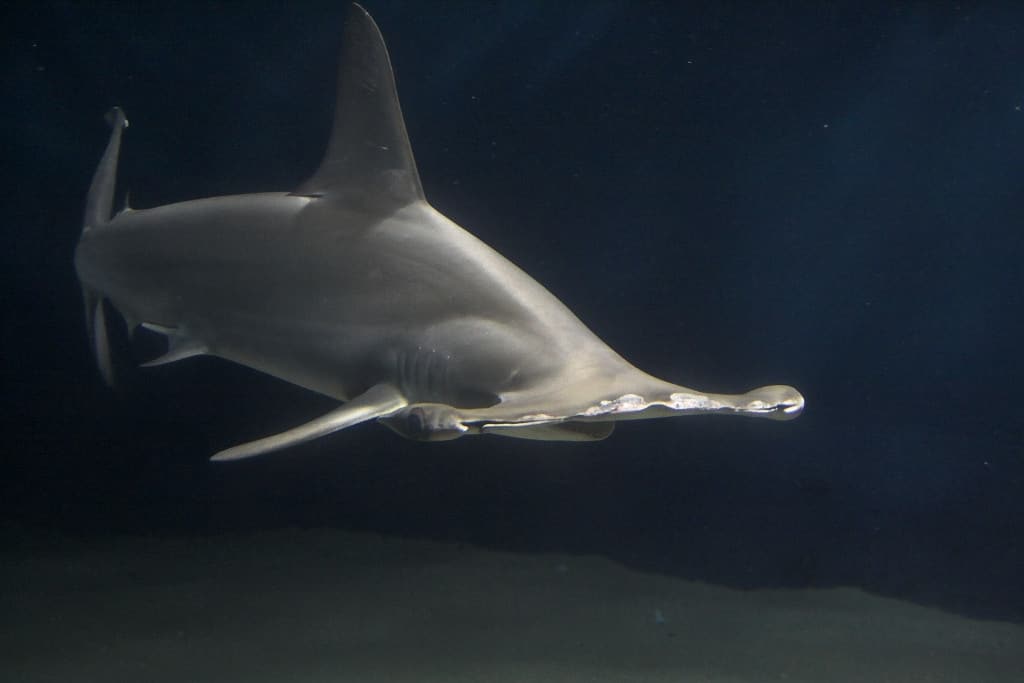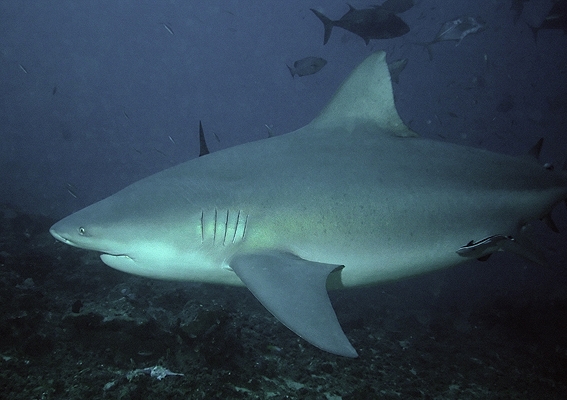Hammerhead Shark vs Tiger Shark: A Complete Comparison
In the realm of ocean apex predators, the Hammerhead Shark vs Tiger Shark comparison reveals fascinating contrasts in hunting strategies and physical adaptations. While the Great Hammerhead can reach lengths of 20 feet (6.1 meters), the Tiger Shark typically grows to 14 feet (4.3 meters), though both species command respect throughout tropical and temperate waters worldwide.
These magnificent predators have evolved distinct approaches to survival. The Hammerhead’s unique T-shaped head provides superior electroreception and wider vision, while the Tiger Shark’s robust build and serrated teeth enable it to tackle virtually any prey. Let’s dive deeper into what sets these remarkable creatures apart.

© Marko Dimitrijevic / CC BY-SA 2.0
The Great Hammerhead Shark’s distinctive cephalofoil (hammer-shaped head) spans up to 50% of its body length, housing highly developed sensory organs that detect prey hidden beneath the sand.

© Albert kok / CC BY-SA 3.0
The Tiger Shark’s powerful build and distinctive tiger-stripe pattern make it instantly recognizable. Its robust jaw structure and serrated teeth enable it to crack even turtle shells with ease.
Key Physical Differences
| Feature | Hammerhead Shark | Tiger Shark |
|---|---|---|
| Maximum Size | 20 feet (6.1 m) | 14 feet (4.3 m) |
| Weight | Up to 1,000 lbs (454 kg) | Up to 1,400 lbs (635 kg) |
| Head Shape | T-shaped cephalofoil | Blunt, rounded snout |
| Coloration | Gray-brown with white belly | Dark gray with tiger-like stripes |
| Teeth Structure | Serrated, triangular | Heavily serrated, curved |
| Distinctive Features | Wide-set eyes, enhanced electroreception | Tiger-like stripes, robust body |
Hunting Strategies and Diet
Hammerhead Shark
- Uses cephalofoil to pin down rays and flatfish
- Enhanced electroreception for detecting buried prey
- Primary diet: stingrays, fish, squid, octopus
- Hunting depth: Usually within 300 feet (91 meters)
Tiger Shark
- Opportunistic feeder with powerful crushing bite
- Known as “garbage can of the sea”
- Diet includes: sea turtles, seals, fish, birds, dolphins
- Hunting depth: Up to 1,150 feet (350 meters)
Habitat and Distribution
The Hammerhead Shark prefers warmer waters and can often be found:
- Along continental shelves
- Around coral reefs
- In coastal areas
- Typically in depths of 0-300 feet (0-91 meters)
Tiger Sharks demonstrate broader habitat tolerance:
- Coastal and oceanic waters
- Tropical to temperate regions
- Both shallow reefs and deep waters
- Depths ranging from surface to 1,150 feet (350 meters)
Who Would Win in a Confrontation?
While direct conflicts between these species are rare, several factors influence potential encounters:
- Size Advantage: Tiger Sharks typically outweigh Hammerheads
- Bite Force: Tiger Sharks possess stronger jaw pressure
- Maneuverability: Hammerheads show superior agility
- Hunting Strategy: Tiger Sharks are more aggressive predators
Conservation Status and Threats
Both species face significant challenges:
- Hammerhead Sharks: Critically Endangered
- Tiger Sharks: Near Threatened
Primary threats include:
- Commercial fishing
- Shark fin trade
- Habitat degradation
- Climate change impacts
Interesting Facts and Behaviors
Hammerhead Sharks:
- Can form schools of up to 100 individuals
- Excellent navigators using Earth’s magnetic field
- Some species show social hierarchies
Tiger Sharks:
- Can travel up to 50 miles per day
- Excellent night vision
- Show seasonal migration patterns
- Known to eat non-food items
Understanding these magnificent predators helps appreciate their crucial role in marine ecosystems and the urgent need for their conservation. While both the Hammerhead Shark and Tiger Shark exhibit unique adaptations and hunting strategies, each species faces increasing challenges in our changing oceans.













